Contemporary artist Heng Li talks about channeling his sadness into art in an interview with Anjali Singh for the Asian Curator.
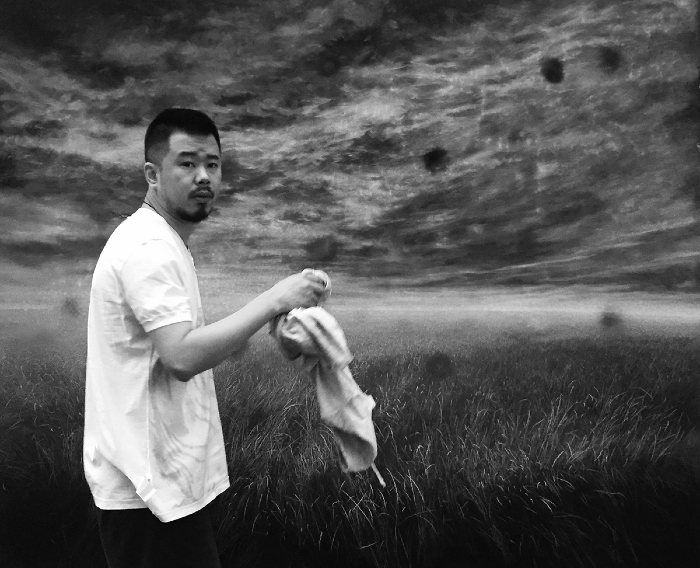
“Understanding”, for me, is the most brilliant psychological gift of human beings and it is also the origin of all thoughts and communication. You cannot correctly grasp the meaning of something without a deep understanding of it. And art is precisely a way to shape a multifaceted understanding.
Contemporary artist Heng Li
How to become an artist.
Please tell us a little about yourself. How do you describe yourself in the context of challenging people’s perspectives via your work?
The first painting of the “Grass” series was created during one of the most difficult periods of my life. The works display the image of a beautiful but cheap plastic chair on the dark grassland. The German word “besitzen” (possession) comes from “sitzen” (sitting). Sigmund Freud believed that the word besitzen was more related to the actual action of sitting than the English equivalent. The red color also represents joy and good fortune in Chinese traditional culture.
The visual impact of the work is so strong that when the viewers see the painting, the desire to take a sit on the red chair is awaken. However, reality doesn’t correspond to our dreams and wishes. The red chair embodies our materialist nature and it symbolises humanity’s desire for wealth, power and love. But desire has no end. It only casts a long disturbing shadow to our existence. This work has the aim to challenge the viewer’s point of view, so I titled it Seemingly Beautiful.
I didn’t understand suffering when I was young, as I had never experienced true sadness: I could not fully understand the existential pain of the whole humanity. Later on, my personal experience made me face suffering and pain and they became a source of strength in my work. I have been working on this series for twelve years. Gradually, I realised that the grass in my works is a spiritual symbol, which represents life, like portraits of people.
In the following years, I used dim monochromes to depict this sense of sadness in my work. There is always a dim light in the distance, which represents hope. Some works are colourful and bright, conveying different emotions such as gentleness, steadiness, simplicity and confusion.
What brought you to the world of contemporary art and how did you start?
I have been keen on painting since childhood. When I was 5 or 6 years old, my father got me a private tutor in Chinese painting and calligraphy. The tutoring last for years and this is the reason why traces of calligraphy are still evident in my works today, as expressions of my oriental aesthetic education background. Later on, I received professional art education at the Central Academy of Fine Arts in Beijing, the Repin Academy Institute of Fine Arts in St. Petersburg, and the Nuremberg Academy of Fine Arts. Through this natural process I got into contemporary art world.
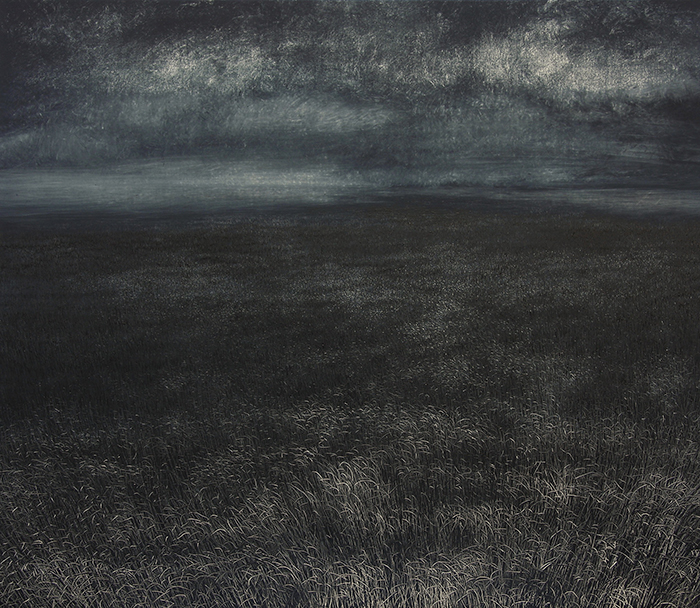
Let’s talk about your frameworks, references and creative process.
I’ve been working on the Grass series for a long time and this corpus of works can be generally divided into four stages.
The initial stage of the series stretches from 2007 to 2009. At that time, my personal experience of pain and suffering generated a strong motivation and an incredible creativity. Works created at that stage feature a strong desire to pour emotions out and a need for healing. However, they are immature works in terms of the overall form: some of them are confused and disorganized, some of them are more “passive and obedient”.
The second stage is from 2010 to 2013: it was a transitory process of gradual maturity and self-affirmation, which finally led to perfection.
The third phase stretches from 2014 to 2018: at that time, the series reached its full development. The representation of grass was a way to express freely all my emotions, which are pivotal elements in my work. During that time, expressing a large variety of feelings became the ultimate goal of my creation. Also, my focus gradually shifted from individuality to a collective emotional dimension, characterized by a universal connotation. We can call it compassion, or empathy for our shared destiny. This is an interesting process. The sky, the earth, and the grassland in my paintings suggest the relationship between humanity and nature. This is an appropriate metaphor with a strong symbolic meaning. With the increase of, the number of paintings from the Grass series, my feeling of empathy is also strengthened.
In the last stage, from 2019 till now, I challenge my previous work: human civilization is under scrutiny. I think it is the result of a process of self- questioning which characterized my artistic practice and determined shifts and transformation in the directions of development of my artistic language. 2020 is an extraordinary year which had objectively an impact on my perception and vision, while influencing the representation of certain visual elements in my works: grass appear less in my painting and it is depicted in a more abstract way, often located in internal spaces. Some of the latest works do not even have anything to do with grass, even if they represent a continuation of my previous practice. I want to make it clear that my understanding of self-questioning has a positive connotation. It is a source of motivation and inner strength.
What would you call your style?
I sometimes refer to my style using the metaphor of subtraction. In my paintings, the grass is not painted, but is formed by scraping off the oil paint from the surface of the canvas with a scraper: with this technique, the background colors appear. I use a similar method to deal with the part related to the sky, using rags to wipe off the paint on the surface of the canvas to create the profiles of clouds, sky and light, alongside with some other abstract elements. The method of subtraction characterized the entire creative process and it also gives to the work a sculptural character.
Choice of medium in art
Let’s talk about the evolution of your practice and medium of art over the years.
I usually use acrylic and oil paints to apply several layers of colors on the surface of the painting. Rags of different materials, scrapers of different shapes are useful tools for my creative process. In recent works, I also applied a lot of hay, which I would eventually remove from the painting so as the viewers could see any hay: after removing the hay, just some traces on the surface of the painting are left. This is what I am interested about.
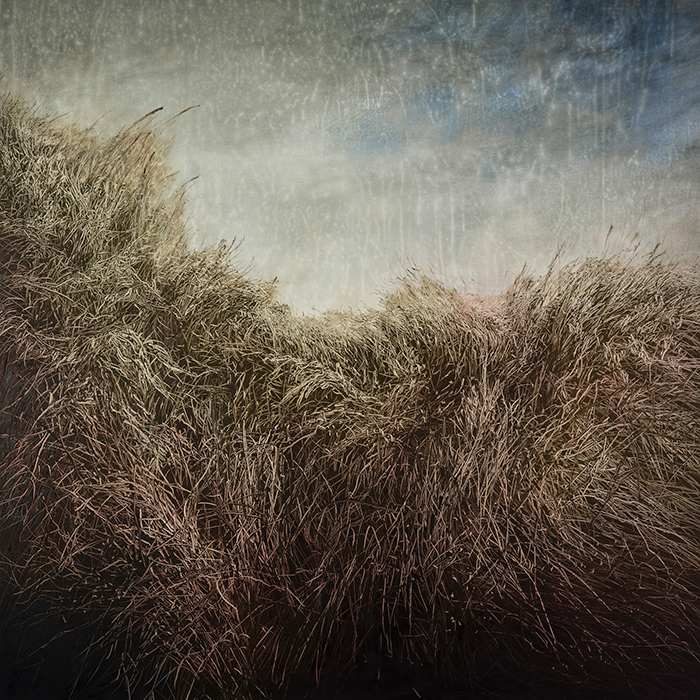
The creative process: creative blocks
What does the creative process mean to you?
It is difficult for me to separate art from my life, as I never stop thinking about my creation even when I’m cooking, dining, bathing, driving, walking, or even sitting on the toilet. I just can’t help thinking about it. However, if I don’t touch the paint brushes for a few days, or if I don’t smell the paint and oil, I feel lost. Creation is like breathing: it is natural and indispensable to me.
How do you deal with the conceptual difficulty and uncertainty of creating new work?
For me, the difficulty in creating the concept for a new work lies in the challenge to explore the depth of this conceptual framework. It is a constant work that needs to be done and reading helps me a lot to enrich my work and my life. This richness determines the deepness and meaningfulness of my creation. Many uncertainties and accidents also occur during the creative process. If the artist is not sensitive enough, these unexpected elements will be ignored. However, in many cases, they are surprisingly valuable. Discovery, judgment, development, these are all important stages in the creative process and they all require sensitivity.
How do you overcome creative blocks?
I can face blocks in different forms and under different circumstances at any stage of the creative process; I have no fixed strategies to overcome them. Sometimes I keep my options open, sometimes I choose to challenge myself and to work really hard; and sometimes I resolve it by reading a book or viewing an exhibition. But there are cases that cost me a lot: In 2013, I was trying to depict the calm before the storm. I painted on five canvases within two months, in order to achieve the right feeling of tranquility. I was not particularly satisfied with the first two.
The third one seemed to reveal some regular patterns; and when I was working on the fourth one, I had an epiphany. In the fifth painting, which is also the largest one, I emphasized the sense of deadly silence full of tension. After finishing it, I felt relieved and ecstatic. The next day I was still immersed in the pleasure of having get the painting done and I was thinking about the title. That night I drunk too much I had hallucinations. I saw myself falling into a dark space. The illusion made me very excited: I was not scared at all, but I fell from the balcony on the 7th floor, breaking 7 ribs and the spine. During the weeks lying in the hospital bed and unable to move, I kept thinking over that painting, which I eventually named “Inevitability”. Certainly, I fully recovered now.
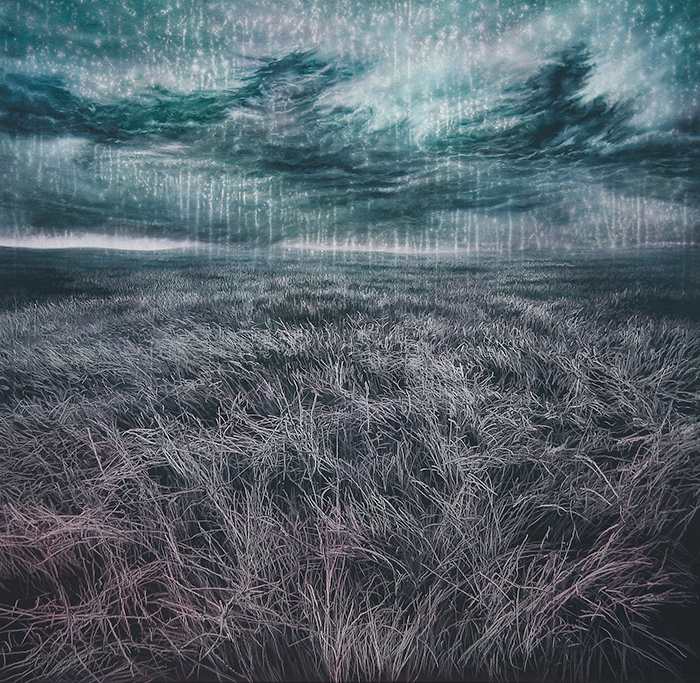
The creative process: creative inspiration
What is your source of creative inspiration?
Different experiences in life. Reading and viewing exhibitions.
Which shows, performances and experiences have shaped your own creative process? Who are your favourite contemporary artist maestros?
I expose myself to as many works and exhibitions as possible going to museums, galleries, art fairs, visiting online websites or reading books. The unique structure, the creative ideas and concepts, or even a certain sentence or anecdote associated with the works I see might inspire me. What impressed me the most was the first time I saw Thierry De Cordier’s work at the Venice Biennale in 2013. I was completely shocked. After that, I created a series of works such as Inevitability, Grace, Listening and The Realisation of Truth. There are other modern and contemporary artists I admire, such as Mark Rothko, Günther Förg, Tetsuya Ishida, and Anish Kapoor. In addition, I also like artists such as Huai Su, Kazimir Malevich, William Turner…
On contemporary visual art.
What does contemporary/visual art mean to you? What role do contemporary artists play in shaping culture and society?
First of all, contemporary artists should never follow fashionable trends, as shown in the quote of the poem written by Su Shi, “Why could’t I tell the true shape of Mountain Lu? For I am right in the mountain.” Artists are sensitive, forward-looking and avant-garde, so they are able to examine culture and social phenomena from a distant perspective, with a sense of social responsibility and a high degree of humanistic spirit. Contemporary art is part of the overall progress of human cultural evolution. For me, it requires loyalty to all mankind, although in many cases this loyalty might appear in a provocative form.
Artist lifestyle: Art studio
Tell us about your art studio, what kind of place is it?
My studio is located in the cultural district of Munich which used to be a military camp during the WWII. About 100 artists are based there and the space is managed by the Munich Ministry of Culture.
Day in the life of a visual artist: Could you describe your usual work-day?
Many people think that freelancers, such as artists, have much more free time, or that, at least, they can arrange the alternation between work and free time as it suits them the best. This is indeed the advantage of freelancers, but it sometimes exposes artists to the tendency to procrastinate and to be unproductive. So, I always encourage myself to be more diligent.
Pick one: Artist apartment v/s artist studio rental. Which one applies to you and why?
I work both at my studio and at home. I use unscented media such as acrylic, watercolour or pencil when at home. Sometimes, I work from home so I avoid to spend 25 minutes driving to reach my studio. In the studio, I usually focus on large-scale works, using media such as oil paint. In general, I am more comfortable working in the studio, as I feel better to paint in a space which is meant to be a mess anyway.
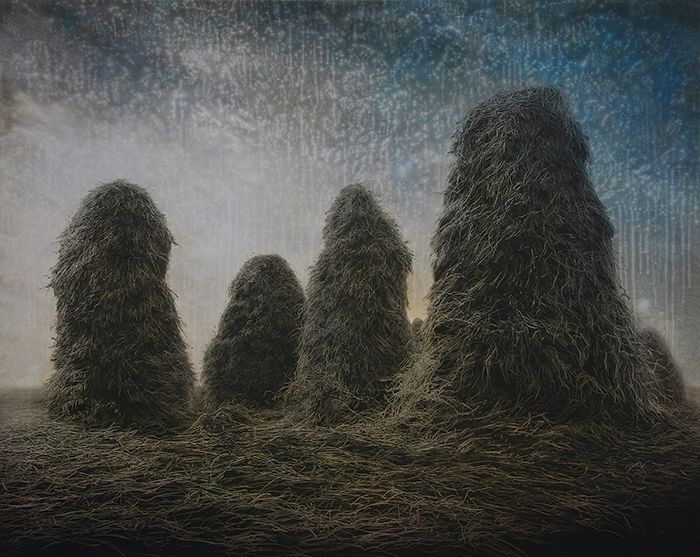
Career as an artist
Let’s talk about your career as an artist, or if you prefer artistic journey. What were your biggest learning and hiccups along the way?
To some extent, my life is itself a journey through art. I left my hometown, Urumqi, to move to Beijing, and then I lived in Russia for two years to study art. I have lived in Germany for 18 years and I have experienced the huge culture shock between the East and the West. Lacking background information on history, religion and customs, I frequently fail to grasp the meaning or the emotional connotations of certain words. Furthermore, the stereotypes carried by my own culture also affected my understanding of contemporary art.
“Understanding”, for me, is the most brilliant psychological gift of human beings and it is also the origin of all thoughts and communication. You cannot correctly grasp the meaning of something without a deep understanding of it. And art is precisely a way to shape a multifaceted understanding. Therefore, the “understanding” was the biggest difficulty in my learning process. Being away from the motherland also means to be far away from my own original culture: this condition generates an ambivalent and complex combination of emotions. It’s true that our surrounding environment determines our perspectives. Being caught between two or more cultural backgrounds provides me with a distant and detached perspective to see objectively all of them and to elaborate accurate judgements thanks to the comparison. This is also a gain.
Describe a professional risk that you took. What helped you take it?
I prefer to look at this from a broader perspective. I always think that to be an artist is not a very healthy job. Artists very often have a value system which can be too extreme, and even the opposite than the one shared by common people. The education most of them receive is very specific and it often lacks a comprehensive and integral character, characteristics that are required to face society and its rules. Artists are meant to experience a great deal of pain and helplessness.
Unlike doctors or teachers who have a stable and regular income, artists might experience extreme financial situations in both sides: they are also swallowed by all the temptations of the commercial environment. These situations are faced by bohemian artists, by bourgeois artists and by artists like myself. I cherish these experiences which enabled me to look at my profession and at the society in general with a more open, rational and tolerant attitude. Finally, I want to emphasise the importance of reading again, because reading really helped me a lot. To read enriches all of us and makes us better people.
Any mentor, curator or gallerist who deserves a special mention for furthering your career as an artist?
Every mentor, curator, gallerist, collector I have met, they all have helped me in some ways. Painting is a lonely thing to do. When I think of people who help me, my loneliness fades away. Here I would like to thank two mentors. One is my tutor, Mr. Sun Xiaodong, who trained me in orthodox oriental ink and calligraphy: this broadened my vision for aesthetics and also emotionally encouraged me to be an artist. The other mentor is my professor in Germany, Mr.Ottmar Hörl. He once said: “The enthusiasm you hold for one thing determines how far you can travel on the path”. He guided me through a richer and more specific understanding of Western contemporary art in many ways and he made me understand the relationship between me and creation.
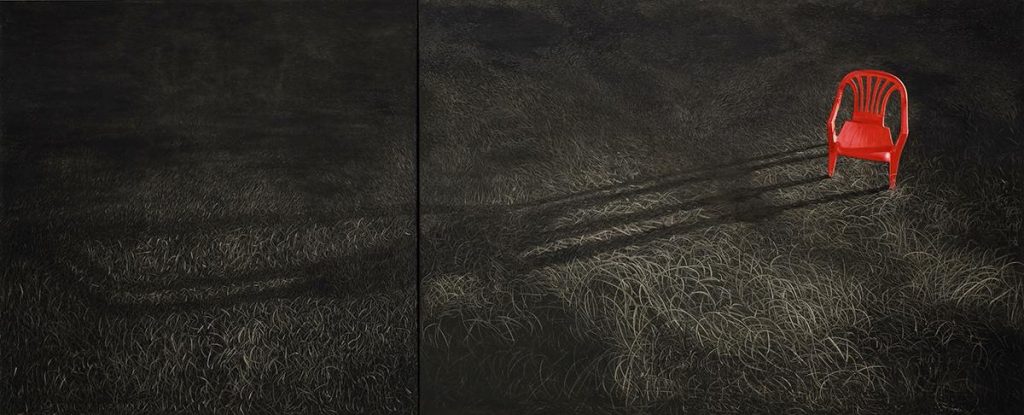
Is it imperative to have a visual art degree become a visual artist?
It is not imperative to have it. However, if you have been trained professionally in art, it will help you a lot, no matter which direction you will take.
On artist commissions
Are you more of a studio artist or naturally collaborative by nature?
I think I am more of a studio artist.
How do you feel about artist commissions?
Works on commission are usually characterized by more restrictions. Sometimes the process of commission affects the subjectivity or the purity of the artist’s creation, so it can be quite challenging. By facing all these challenges in different projects, the artist will experience a process of self- improvement and enrichment. Therefore, I am open to the commission system.
Art marketing & building an audience
Tell us about your first sale.
I have already cooperated with local galleries when I was still in Nuremberg. More than half of the works were sold on my first solo exhibition.
Does art marketing come naturally to you?
Art marketing is not natural but essential. For artists, creation itself is always the most significant thing.
Do you handle art valuation and sales yourself?
The valuation of my works is carried out in consultation with galleries or institutions I collaborate with, regardless of where they operate. I don’t deal with sales myself. I try to let professionals do it as much as possible. But occasionally I have to deal with sales opportunities directly and I usually let my wife cope with them.
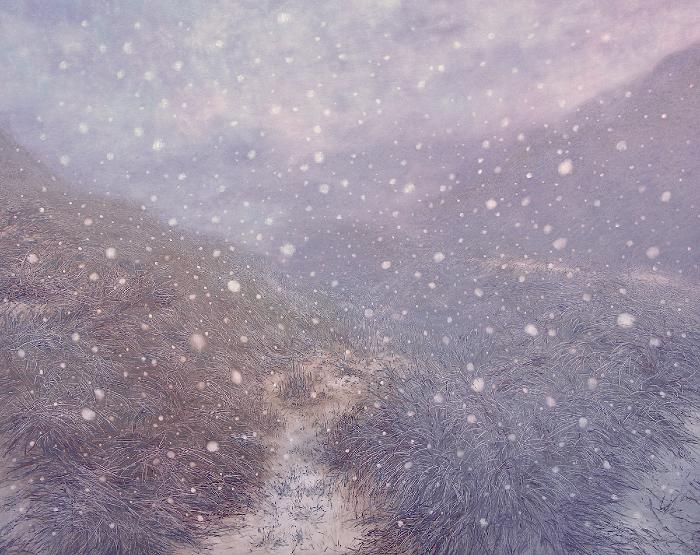
How does your audience interact and react to the work you put out into the world?
I have seen people crying in front of my works, and some others dancing in excitement. Sometimes I talk to the viewers and they are surprised by that fact that I am a man: many of them imaged I was a woman for the delicate expressions and emotions imbued in my works. The public in the West tend to grasp more the Eastern character of my works, whereas viewers in the East tend to see more Western elements. I believe the reaction of the market shows the recognition of my works.
On upcoming work
Themes you are currently working on?
The current subject is the continuation of the grass subject matter, but it has shifted from external to internal representation. For instance, grass elements appear in the interior of certain representative buildings. It more specifically shows my doubts on the evolution of the entire human civilisation.
Artist statement
Artist statement: cliché or necessity or nice to have
Necessary
If you chose necessity: Let’s talk about the importance of an artist statement?
For me, it plays a role in organizing and summarizing my long-term creations and thoughts.
How much time did you spend writing your artist statement
It took a week off and on, and then some more time for the translation.
How to write an artist statement. Any tips for your fellow seekers & visual artists
It is best to write the statement in your native language and ask a professional to translate it.
Before you go – you might like to browse our Artist Interviews. Interviews of artists and outliers on how to be an artist. Contemporary artists on the source of their creative inspiration.












Add Comment